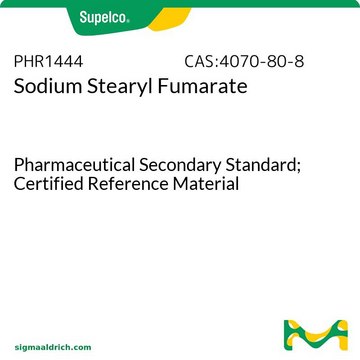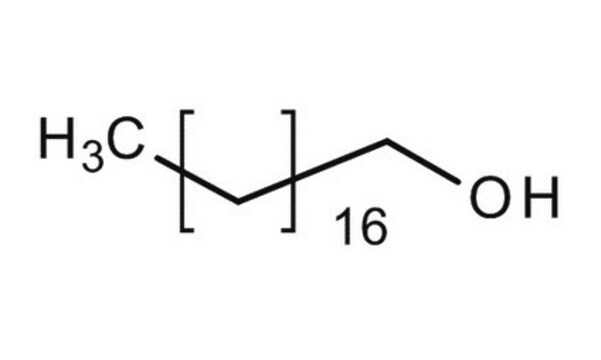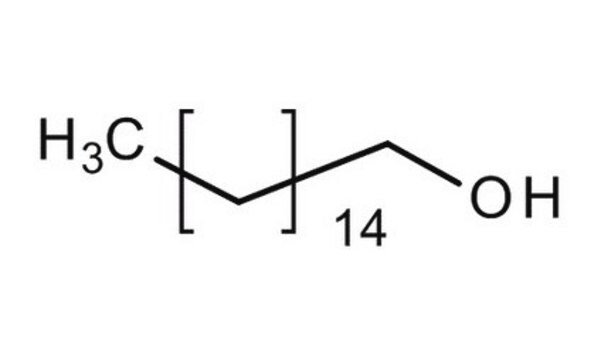Kluczowe dokumenty
1622000
USP
Alkohol stearylowy
United States Pharmacopeia (USP) Reference Standard
Synonim(y):
1-Octadecanol, Octadecyl alcohol, Stearyl alcohol
About This Item
Polecane produkty
klasa czystości
pharmaceutical primary standard
gęstość pary
9.3 (vs air)
ciśnienie pary
<0.01 mmHg ( 38 °C)
rodzina API
stearyl alcohol
temp. samozapłonu
842 °F
granice wybuchowości
~8 %
producent / nazwa handlowa
USP
mp
56-59 °C (lit.)
gęstość
0.812 g/mL at 25 °C (lit.)
Zastosowanie
pharmaceutical (small molecule)
Format
neat
ciąg SMILES
CCCCCCCCCCCCCCCCCCO
InChI
1S/C18H38O/c1-2-3-4-5-6-7-8-9-10-11-12-13-14-15-16-17-18-19/h19H,2-18H2,1H3
Klucz InChI
GLDOVTGHNKAZLK-UHFFFAOYSA-N
Szukasz podobnych produktów? Odwiedź Przewodnik dotyczący porównywania produktów
Opis ogólny
Zastosowanie
- Alkohol cetostearylowy
- Stearylofumaran sodu
- uwodorniona lanolina
- Alkohol cetylowy
- Alkohol mirystylowy
- Alkohol oleilowy
Komentarz do analizy
Inne uwagi
produkt powiązany
Kod klasy składowania
11 - Combustible Solids
Klasa zagrożenia wodnego (WGK)
nwg
Temperatura zapłonu (°F)
383.0 °F - closed cup
Temperatura zapłonu (°C)
195 °C - closed cup
Wybierz jedną z najnowszych wersji:
Certyfikaty analizy (CoA)
It looks like we've run into a problem, but you can still download Certificates of Analysis from our Dokumenty section.
Proszę o kontakt, jeśli potrzebna jest pomoc Obsługa Klienta
Masz już ten produkt?
Dokumenty związane z niedawno zakupionymi produktami zostały zamieszczone w Bibliotece dokumentów.
Klienci oglądali również te produkty
Nasz zespół naukowców ma doświadczenie we wszystkich obszarach badań, w tym w naukach przyrodniczych, materiałoznawstwie, syntezie chemicznej, chromatografii, analityce i wielu innych dziedzinach.
Skontaktuj się z zespołem ds. pomocy technicznej










